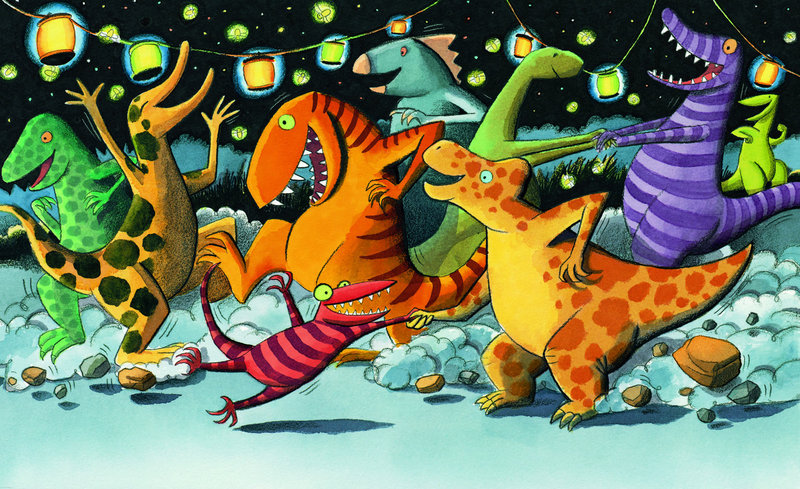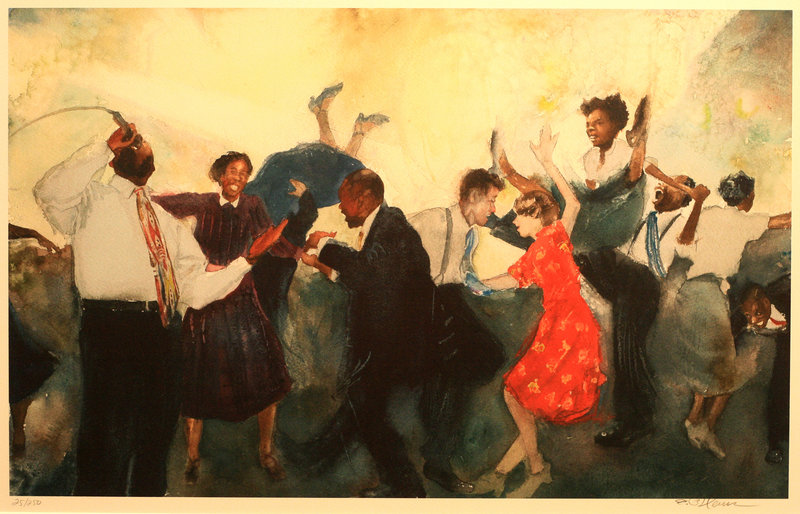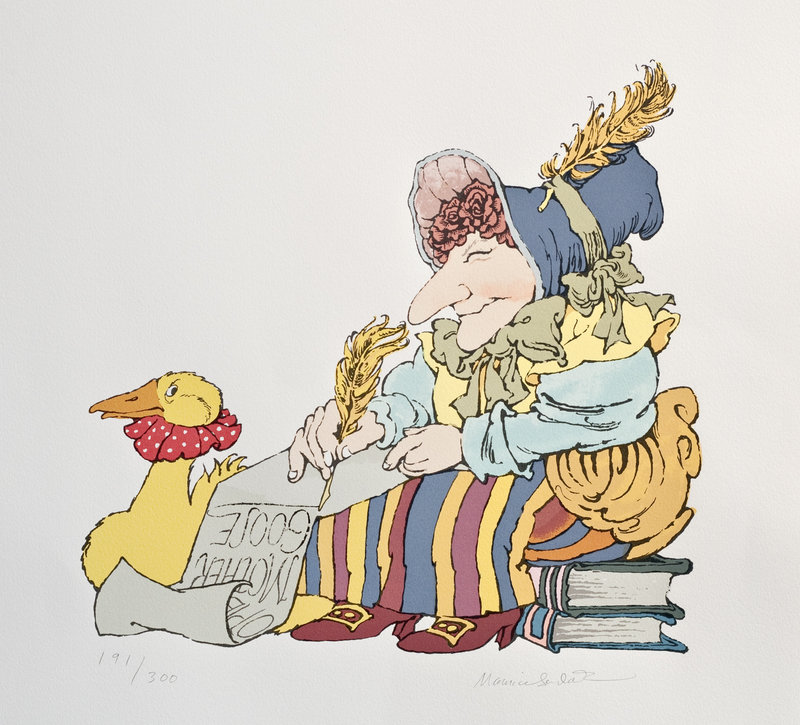If there is a more famous — or beloved — American artist than Dr. Seuss, I would like to meet that person.
If there is an artist in this country who has tickled more imaginations than Maurice Sendak, I would like to know.
The people who make illustrations for children’s books are among the most powerful cultural influences in our lives — not only for the kids who see their pictures, but for the parents who choose to share the art with them.
“Children’s Book Illustrators” at the University of New England Art Gallery in Portland is a curatorial coup for director Anne Zill. It is a wonderful, entertaining and surprisingly illuminating show.
It is also an important show for the dedicated art audience. Art fans often seem to willfully forget that virtually all of the ambitious art made before the 20th century was directly related to illustration. At the top of the French Academy’s official hierarchy of genres were history painting, portraiture and religious painting.
In other words, legibility, narrative and recognizable characters were the most important elements of art in European culture for hundreds of years.
Our recently invented ideas about the primacy of self-expression have tried to wipe this history away, but that inclination is fraying at the edges. Stories and our history matter.
Several of the pieces Zill selected for the show echo this broad sentiment. Sendak’s “Mother Goose” seems to be dreaming (eyes closed) of her own reality as she scratches her name on a scroll with a quill. To write her own name is a brilliant joke, because it is not she but Sendak who has scribbled the inverted name.
While our kids might experience delight and excitement at seeing this and a few of Sendak’s pencil drawings in the flesh, the conceptual virtuosity of this image should winkle the most cynical post-modernist.
Zill has included not only international mainstays but talented local stars as well. The quality and impact of the local artists surprised me; they’re hardly on a lower tier. Maybe this should be no surprise in the land of N.C. Wyeth, but it’s still impressive.
Peaks Island artist Scott Nash’s dangerously playful “Dinosaur Stomp” is as strong as anything in the show, and is probably more recognizable than Leonard Baskin’s illustrations, even though Baskin was one of America’s greatest artists and leading printmakers. That said, Baskin leads off the show for good reason: very creepy and kind of scary, but so much fun.
It’s interesting to compare Baskin’s original gouache for “Alligator (sixty teeth)” with how it was published in “Ten Times Better”: It’s cropped in close in the book to feel even closer — and more terrifying.
This exhibition could feel slightly dislocated to some viewers, because Americans are more used to the here-and-now presence of abstraction, landscape and surrealism. Yet this show is more like a walk through the Louvre, in the sense that all of the work is narrative and relates to known stories or portraits of characters.
While most of the images in “Children’s Book Illustrators” have the distinct flavor of illustration, many of them stand very well on their own.
E.B. Lewis’ “When Folks are Swinging” is a jazzy, feet-in-the-air dance scene that needs no additional story. Barbara Cooney’s “Egg Rock” from “Island Boy” is a dreamy, sweet Maine seascape.
Jerry Pinkney’s gorgeous and complexly roiling watercolor “Belling the Cat” is my favorite piece in the show, and all three of his works prove him to be a master watercolorist. Eric Carle’s snow leopard and flying crane are great pictures; his paint and collage style is recognizable and exciting.
The loans from the Eric Carle Museum of Picture Book Art also include a pair of images by Leo Lionni, William Steig and, among others, a wonderful city on a whale by Peter Sis.
“Children’s Book Illustrators” makes a strong case for rethinking the status of the graphic images we share with our children. Whether you want to take on this kernel of cultural philosophy or have some fun with your kids, this is a great show for everyone who has ever been a child.
Freelance writer Daniel Kany is an art historian who lives in Cumberland. He can be contacted at:
dankany@gmail.com
Send questions/comments to the editors.





Success. Please wait for the page to reload. If the page does not reload within 5 seconds, please refresh the page.
Enter your email and password to access comments.
Hi, to comment on stories you must . This profile is in addition to your subscription and website login.
Already have a commenting profile? .
Invalid username/password.
Please check your email to confirm and complete your registration.
Only subscribers are eligible to post comments. Please subscribe or login first for digital access. Here’s why.
Use the form below to reset your password. When you've submitted your account email, we will send an email with a reset code.